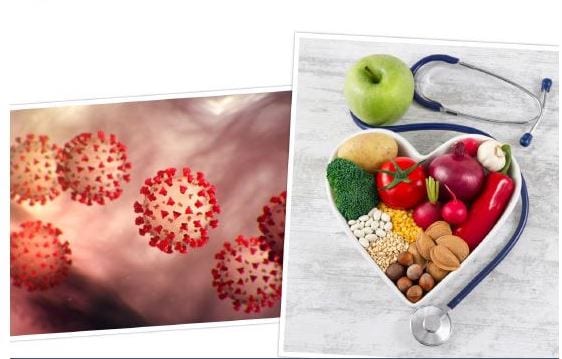Contents
- Introduction
- General nutritional recommendations for Coronavirus (COVID-19)
- Specialized dietary foods for detoxifying the body during Coronavirus disease
- Diet products for the prevention of obesity and increased body weight to fight COVID-19
- Specialized dietary therapeutic and prophylactic nutrition while coronavirus
- Moore about maintaining a healthy nutrition while COVID-19 watch in the video below:
- CONCLUSION
Introduction
2020 brought a new viral threat to the world’s population – COVID-19 viral infection, which has already affected millions of people in various countries of the world. In a short period of time, scientists around the world have actively participated in the study of the ways of spreading the virus, the pathogenesis of the disease, the development of therapeutic vaccines against the virus. Among the areas under study related to coronavirus infection, one of the most important and not fully resolved is the development of effective measures for nutritional prevention and rehabilitation of people with coronavirus infection and people who have been in quarantine and self-isolation for a long time.
Already at the beginning of the COVID-19 viral infection pandemic, the World Health Organization (WHO) identified the nutritional factor as one of the key factors in maintaining public health in conditions of quarantine and self-isolation. The WHO European Office for the Prevention and Control of Noncommunicable Diseases has developed a set of essential rules.
Among the most important factors and medico-social reasons contributing to the formation of disorders in the body during self-isolation and quarantine, such as are important:
- stress-forming situation;
- reducing the need to enhance the body’s nonspecific resistance to adverse environmental factors, in particular, biological nature (microorganisms, viruses);
- decreased physical activity;
- violation of habitual regimes and diets.
It is known that the nutritional factor plays a key role in the prevention of not only various diseases, but also health disorders in conditions of self-isolation and quarantine. The recommendations of Rospotrebnadzor of the Russian Federation indicate that the most important prevention factors are reducing the effect of stress during prolonged quarantine and self-isolation, maintaining physical activity, and reducing the calorie content of the diet.
The need to reduce the calorie content of the diet by 200-400 kcal is also indicated by the chief nutritionist of the Russian Federation, academician V.A. Tutelyan.
In the United States, a cross-sectional analysis was performed of all laboratory-confirmed COVID-19 patients who received treatment in the academic health system in New York from March 1, 2020 to April 2, 2020, followed by follow-up until April 7, 2020.
Scientists found that almost half of the patients (46%) hospitalized with coronavirus infection were over 65 years old. They also found that the most frequently hospitalized people with severe coronavirus and obesity. According to the study, even those under 60 are twice as likely to need hospitalization if they are obese. The researchers attribute this to the fact that obese patients are more susceptible to infections. Their immune systems try to fight off excess body fat, so they don’t fully fight the virus.
Research shows that age of patients and comorbid conditions such as obesity and cardiovascular disease are the most powerful predictors of hospitalization. Obesity was considered a more dangerous factor than cancer for patients with coronavirus.
According to the World Obesity Federation (WOF), obesity significantly worsens the course of coronavirus infection (COVID-19). People with a BMI of 40 or above are advised to take extra care, and preventing infection is of paramount importance for obese people.
The WHO Center for Disease Control and Prevention (CDC) has reported that people with heart disease and diabetes are at a higher risk of complications from COVID-19. Given the extremely high rates of obesity around the world, a large percentage of people who become infected with the coronavirus are expected to have a BMI above 25.
In addition, obese people who become ill and need intensive care create problems in patient management by intubating patients obesity is more difficult, it may be more difficult to obtain diagnostic imaging of the pathology (since there are weight restrictions on imaging machines).
Thus, controlling body weight is an important factor not only in maintaining health, but also in preventing the severe course of COVID-19. Numerous sociological studies show that the use of dietary diets with reduced calorie content is most effective for this purpose.
Intoxication is especially pronounced in patients with coronavirus infection. Among the clinical variants of manifestations of coronavirus infection, along with impaired respiratory function, severe intoxication and the development of manifestations such as sepsis and septic (infectious-toxic) shock play a significant role. In addition, there are symptoms of discomfort in the abdomen, nausea, vomiting.
Moreover, intoxication is not only the result of the disease itself, but also the effect of taking highly toxic drugs during the treatment period, prolonged stay of patients in an isolated space, physical inactivity, etc. At the same time, after discharge, symptoms of intoxication, such as weakness, chronic fatigue, violation taste sensations, vision, hearing, muscle pain occurs, psycho-emotional disorders are frequent, exacerbation of gastrointestinal pathology, because it is known that along with the respiratory system, the gastrointestinal tract is also the “gateway” for the penetration of coronavirus.
There is not a single food product that can destroy the coronavirus or prevent it from entering the human body. Rose hips, onions, sea buckthorn, bacon, butter, pepper, oak tincture, green tea, fish or broccoli do not protect against COVID-19 infection, although they are very healthy to eat. Compliance with some of the recommendations in daily life will help to some extent resist infection.
Drinking regime.
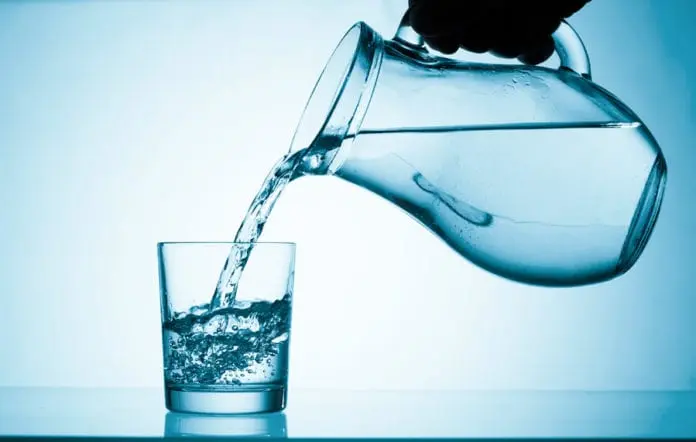
Moistened mucous membranes are the first barrier to the virus. WHO does not give clear recommendations on the amount of water a person should drink. There are too many factors affecting this value. This is the physical and physiological state of a person, age, the presence of various diseases, environmental conditions (heat, heating season), the composition of the diet, habits and more. It is believed that a person needs at least 25 ml / kg / day. However, this figure can go up to 60 ml / kg / day.
80% of our immunity is in the intestines.
And the use of foods rich in fiber helps to maintain the normal microflora of our intestines. In addition, vegetables, fruits, berries are rich in polyphenols, pectin, vitamins of various groups.
WHO recommends consuming at least 400 grams of different vegetables and fruits daily.
Quercetin proved to be active against viruses. It is found in green and yellow peppers, asparagus, cherries, capers.
It is recommended to include red and green algae in the diet, because they contain griffithin, which has been shown to be effective against the herpes virus and HIV infection.
Garlic and onions contain alliin, which, when cut or crushed, converts to allicin, a substance known as a natural antibiotic. It has a high activity against bacteria. It is stored in the blood and gastric juice. How this substance interacts with viruses, unfortunately, is not well understood. But it has been used for many centuries for the prevention and treatment of diseases.
Ginger, which, unlike garlic, also has a pleasant smell, due to the high content of ascorbic acid, vitamins of group B, A, zinc, calcium, iodine, natural antibiotics and antifungal elements, along with heme garlic, it has a strengthening effect on the body and increases resistance to various diseases.
The active ingredient of ginger – gingerol – significantly alleviates inflammation and chronic pain. Ginger is also known to help the body cleanse itself of almost all types of toxins.
The active ingredient in Turmeric, curcumin, is considered a powerful immune stimulant and natural antibiotic that prevents bacterial complications in viral infections.
The use of Lemons for colds is associated with the content of ascorbic acid in a special form in this fruit. The fact is that ascorbic acid is a strong reducing agent. It is able to reduce iron, which is in an oxidized state. Reduced iron can react to form free radicals. If you catch an infection, free radicals will help your body to cope with it, as they kill all life, including viruses and bacteria.
It is important that lemons, like other citrus fruits, are not the only or richest source of ascorbic acid. You need to eat them whole with the peel. In addition to citrus fruits, it is recommended to use deep-frozen berries and vegetables that do not lose their properties.
The leader in vitamin C content is black currant, rose hips, cranberries and other berries, sauerkraut, bell peppers, green leafy vegetables and others. It will not be superfluous to recall that during the period of the spread of COVID-19 infection, all fruits, berries and vegetables that are eaten without heat treatment must be thoroughly washed.
Pro- and Prebiotics
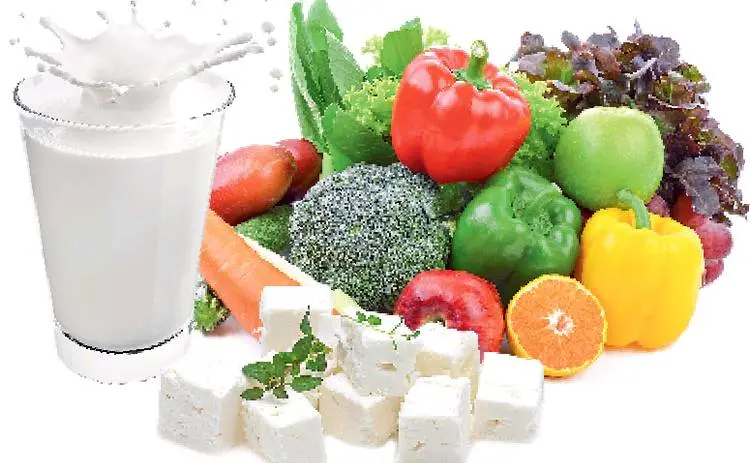
Foods containing pro- and prebiotics also contribute to the maintenance of normal intestinal microflora. Fermented milk products are an excellent source of calcium, vitamins and microelements, they have a positive effect on the natural intestinal flora, due to the content of lactobacilli.
Chicory and Jerusalem artichoke, due to their inulin content, are essential for maintaining the health of the gastrointestinal tract.
Omega-3
For the health of cell membranes – Omega-3. Marine fish such as halibut, salmon, herring, tuna, mackerel and sardines, as well as flaxseed oil, are high in omega-3 acids, which provide the building blocks for the production of anti-inflammatory hormones – eicosanoids, which have a beneficial effect on the immune system.
For the normal functioning of the body, 1-7 grams of Omega-3 fatty acids are needed per day. Omega-3s have a beneficial effect on the human immune system. The diet should contain oily fish 2-3 times a week. Vegetable oils contain Omega-6, -9 fatty acids, which are also essential for our body. It is recommended to consume 20-25 grams of vegetable oils per day.
Vitamin D
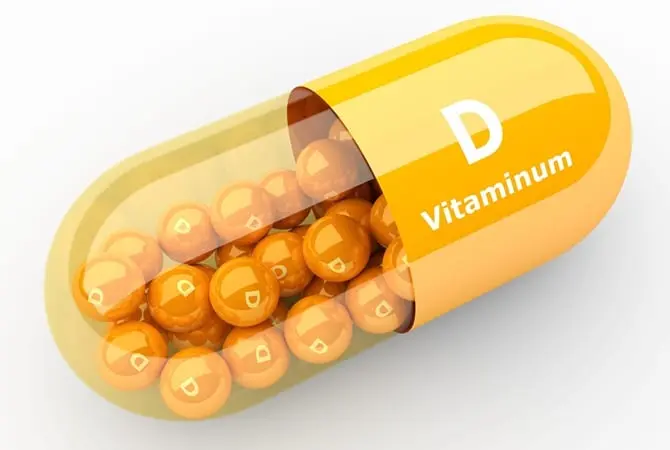
Vitamin D is the most immunomodulating vitamin. 80% of our population is deficient in this vitamin, especially during the period when there is little sun outside the window.
Fish will be a complete source of vitamin, the most useful are recognized: halibut, mackerel, cod, herring, tuna and the liver of these fish. Other sources of vitamin D are eggs, offal, forest mushrooms, and dairy products.
You can also drink it in preparations or supplements to get at least 400-800 IU per day.
Fats
Our lungs are a very fat-dependent organ, and without a full-fledged intake of fats in the body with food, the work of the lungs is disrupted. A factor that damages the lungs no less than the notorious smoking is a fat-free diet. Lack of fat in the diet leads to the fact that any infection, including COVID-19 infection, penetrates the bronchi and lungs much more easily, weakened by a low-fat diet.
An adult needs 70-80 grams of fat per day, up to 30% of which must be provided with animal fats.
Why is fat so necessary for the lungs? The smallest structural components of the lungs, where gas exchange occurs, the alveoli, are coated from the inside with a special substance, a surfactant. It keeps the alveoli in the form of bubbles and does not allow them to “stick together” on exhalation. It also accelerates the entry of oxygen from the alveoli into the blood.
The surfactant consists of more than 90% fats (phospholipids). The daily requirement for phospholipids is approximately 5 g. Chicken eggs contain 3.4%, unrefined vegetable oils – 1-2%, and butter – 0.3-0.4%. Low fat in the diet – there will be little surfactant in the lungs! Oxygen will not be absorbed well, and even the freshest air will not save you from hypoxia.
Proteins
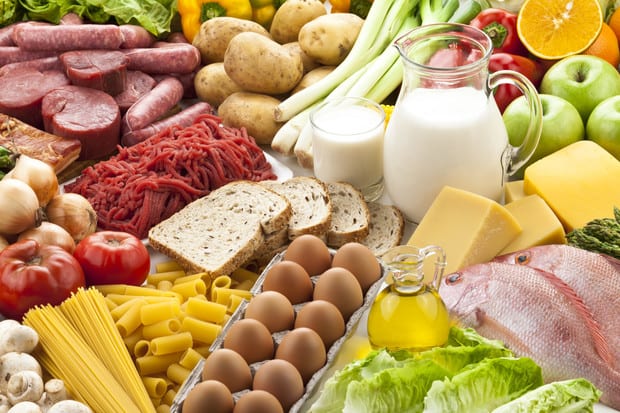
Meat, poultry, fish, dairy products, eggs are a source of animal protein, which the body needs to create tissues and synthesize hormones, as well as immune proteins – antibodies that play an important role in protecting the body from bacteria, viruses and parasites. Vegetable proteins are considered less valuable in terms of amino acid composition, but should be included in the diet. The richest in protein are legumes (beans, peas, lentils, chickpeas), nuts, seeds (quinoa, sesame, pumpkin seeds) and, of course, soybeans and their products. An adult needs to get 0.8-1.2 g / kg of body weight of proteins per day, more than half of them should be of animal origin.
However, all these “wonderful” products have a nonspecific beneficial effect on the human body, i.e. useful for any infections.
Do not forget that food can harm the immune system. High-calorie foods, smoked meats, canned food and marinades, refined foods with a predominance of saturated fats or trans fats, fast food, sugar and salt reduce the body’s natural defenses.
Simple carbohydrates (sugars) are the cause of systemic inflammation. The starch found in potatoes, corn, rutabagas and some other vegetables, grains and white refined cereals is the same sugar. It is sugar that creates glycated hemoglobin, which “scratches” our vessels, causing inflammation of the vascular wall. Pathogenic bacterias are very found of Sugar as well as intestinal fungi, inhibiting the growth of our friendly microflora and reducing our immunity. Thus, it is better to refuse sweets, pastries and confectionery, sweet drinks.
Avoiding alcoholic beverages will also have a beneficial effect, since these foods slow down the absorption of nutrients.
It must be remembered that immunity is influenced not only by nutrition, but also by many other factors. These are heredity, chronic diseases, physiological conditions (for example, pregnancy, old age, puberty, etc.), the presence of bad habits, poor ecology, stress, insomnia and much more.
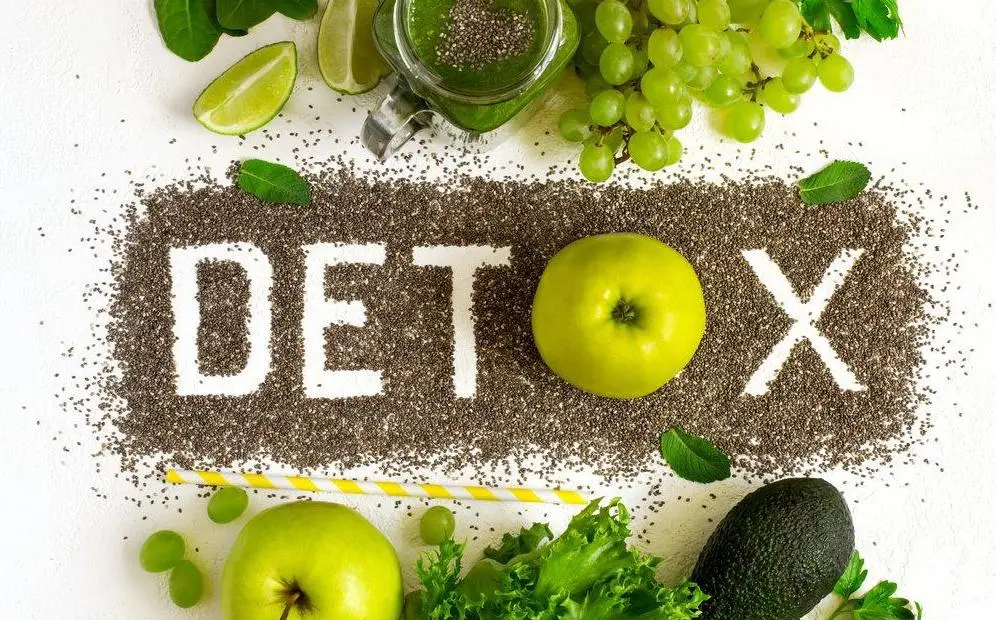
Analysis of specialized dietary food products registered in our country for detoxification of the body made it possible to recommend the following products for detoxification of the body: “DETOX comprehensive nutrition program”, detoxification jelly and bars.
They are specialized food products of preventive dietary nutrition for detoxification of the body, promote detoxification, improve gastrointestinal tract functions, antitoxic liver function, motor-evacuation function of the intestine, etc. These detoxification products provide the activity of phases I and II of toxin metabolism and antioxidant protection.
11 essential foods to detoxify the body while COVID-19
- Apples. They are excellent at detoxifying the body, and apple juice helps to cope with the effects of viruses when we catch an infection, such as the flu. Apples contain pectin, which helps to effectively remove heavy metal compounds and other toxins from the body. It is no coincidence that pectin is included in detoxification programs in the treatment of drug addicts using heroin, cocaine, marijuana. In addition, apples help to get rid of intestinal parasites, certain skin diseases, help treat inflammation of the bladder, and prevent liver problems.
- Beets. The main “cleaner” of our body from toxins and other “unnecessary” substances is the liver. And beets naturally help detoxify the liver itself. Beets, like apples, contain a lot of pectin. Many doctors recommend that you constantly eat beets in all forms – boiled, baked, stewed, use them in the preparation of savory dishes and desserts.
- Celery. Indispensable for detoxification. It helps cleanse the blood, prevents uric acid deposition in joints, and stimulates the thyroid and pituitary glands. Celery also acts as a mild diuretic, making it easier for the kidneys and bladder to function.
- Onion. Promotes the elimination of toxins through the skin. In addition, it cleanses the intestines.
- Cabbage. Its anti-inflammatory properties have been known for a long time. Cabbage juice is used as a remedy for stomach ulcers. And lactic acid. Which cabbage contains helps to keep the colon healthy. In addition, like other cruciferous vegetables, cabbage contains sulphofan, a substance that helps the body fight toxins.
- Garlic. Contains allicin, which helps to flush out toxins and contributes to the normal health of white blood cells. Garlic cleanses the respiratory system and purifies the blood. Lesser known property: It helps eliminate nicotine from the body, and can be a great addition to your diet when you quit smoking.
- Artichoke. Just like beets, it is good for the liver, as it stimulates bile secretion. Plus, artichokes are high in antioxidants and fiber.
- Lemon. It is recommended to drink lemon juice, adding it to warm water, this lemonade is a kind of tonic for the liver and heart. In addition, it prevents the formation of kidney stones, which are alkaline in nature. A large amount of vitamin C helps to cleanse the vascular system.
- Ginger. Its anti-cold properties are widely known. But the diaphoretic effect of ginger simultaneously allows the body to expel toxins through the skin.
- Carrots. Carrots and carrot juice help in the treatment of respiratory, skin diseases. They are used to treat anemia and to regulate the menstrual cycle.
- Water. All of our tissues and cells need water to function well. Even our mental health depends on the amount of water we drink. When the body is dehydrated, it negatively affects all bodily functions. Modern man has lost the habit of drinking pure water, replacing it with coffee, tea, and sweet soda. As a result, in the United States, for example, about 75% of the population is chronically dehydrated. Thus, increasing water consumption (modern nutritionists consider 1.5 – 2 liters per day to be the norm) is an important task.
Diet products for the prevention of obesity and increased body weight to fight COVID-19
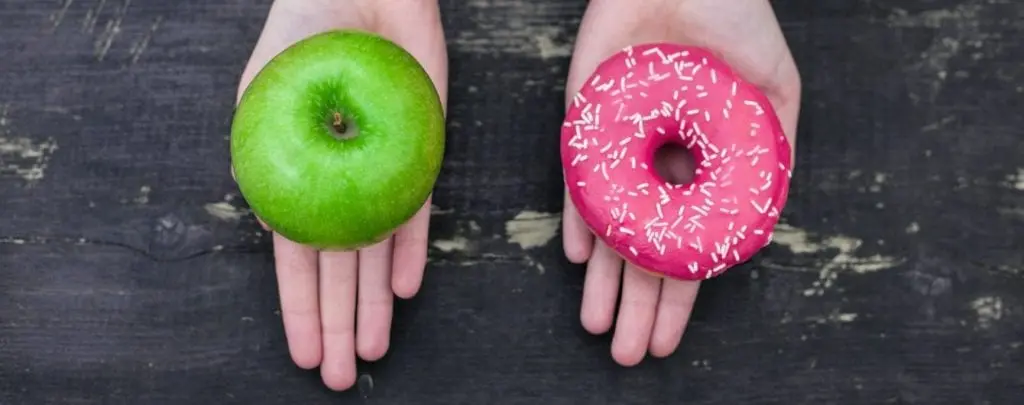
If it is impossible to independently control calorie content, it is most convenient to use specialized dietary low-calorie nutrition programs and specialized foods that have clinical justification for effectiveness to control body weight. Of greatest interest are the specialized preventive dietary nutrition programs.
8 eatable enemies of obesity
Apples
Apples, which are the perfect light meal, will help you control your weight. These juicy fruits are a rich source of dietary fiber. A medium-sized apple contains about 4 grams of fiber. Eating fiber-rich foods like apples will keep you feeling full for a long period of time. The pectin found in apples effectively suppresses appetite and helps your body to use up stored fat at a faster rate.
Ursolic acid, one of the powerful components found in apple peel, increases metabolism while stimulating muscle growth. The many powerful antioxidants in apples will also help prevent excess belly fat.
Oats
Eating one bowl of oatmeal a day can accelerate weight loss. Oats are an excellent source of dietary fiber. Just half a cup of chopped or pressed oatmeal will give you almost 5 grams of fiber. Eating high-fiber foods like oats in your diet can make you feel full and greatly reduce the urge to snack on fatty, unhealthy foods. Eating oats can speed up the metabolism, which means that the accumulated fat will be “burned” at an accelerated rate. Oats are high in phytonutrients and minerals such as lignans, which play a key role in weight loss by stimulating fatty acid oxidation.
Fruit pomegranates
Eating juicy pomegranate seeds or thick pomegranate juice will serve you well in your fight against obesity. The seeds of this exotic fruit contain a huge amount of nutrients that are extremely beneficial for obese people. This low-calorie fruit (105 calories) is rich in both soluble and insoluble fiber, which makes you feel full.
Eating pomegranate seeds can block harmful fats called triglycerides, which are stored in our body. Pomegranates are also rich in polyphenols. Polyphenols increase the body’s metabolic rate, which leads to fat burning. The significant content of vitamins and antioxidants in pomegranate fruit also contributes to the overall process of weight loss.
Yogurt
Fresh yogurt, which serves as a healthy and tasty treat, can help speed up the weight loss process. Daily consumption of yoghurt significantly speeds up the fat burning process. The probiotics or good bacteria found in yogurt can improve metabolism and digestion. This, in turn, helps in the overall weight loss process. Drinking only half a cup of protein-rich yogurt will make you feel much fuller. Probiotic-rich yogurt is also a good source of calcium. Increasing your calcium intake can actually lower your body fat.
Avocado
Replacing common snacks like chips or noodles with avocados can help overweight people achieve their weight-loss goals. Avocados are one of the best foods to include in your diet. These fruits contain a large amount of beneficial monounsaturated fatty acids, which stimulate the metabolic process and help to “burn” fat at a fast pace. This creamy fruit contains a lot of fiber, which will help you cope with hunger attacks. Eating avocados also lowers the level of “bad” cholesterol – low density lipoproteins. And this is also a good help in the overall weight loss process.
Lentils
Dietitians talk about lentils as a natural dietary product. Lentils are high in both soluble and insoluble fiber, which can help you feel fuller. This low-fat, high-protein food also includes a whole range of essential vitamins and minerals to boost metabolic rate. Improving metabolism in the body leads to the “burning” of fat at an accelerated rate. The best way to include lentils in your diet is to pair them with stewed vegetables or a green salad.
Green tea
Drink green tea if you want to lose those extra pounds. Drinking green tea at least twice a day is a direct path to weight loss. Green tea speeds up the body’s metabolic processes, and improving metabolism leads to accelerated dissolution of fatty deposits. Green tea also contains a component called EGCG (epigallocatechin gallate), which reduces the amount of fat stored in the cells of the body. The numerous polyphenols found in green tea also speed up the weight loss process.
Water
Water naturally reduces appetite. Feelings of thirst and hunger are formed simultaneously to signal that the brain needs energy. We do not recognize thirst as a separate sensation, and we perceive both feelings as an urgent need for refreshment. We eat even when the body should receive only water – a source of incomparably cleaner energy. Just try drinking a glass of water instead of a high-calorie bun and your hunger will subside!
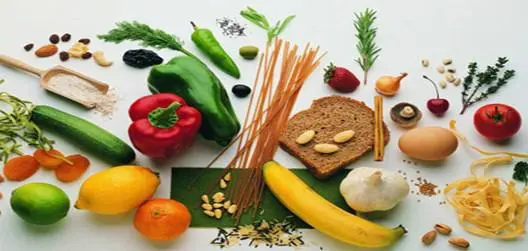
The revealed increase during the period of self-isolation and quarantine in the frequency of visits to doctors by people with diseases of the gastrointestinal tract requires the organization of special meals during this period, aimed at maintaining the activity of the stomach, intestines, liver, and pancreas. Considering that the digestive system, as already mentioned, is, along with the respiratory, the “gateway” to the introduction of coronavirus infection into the body, the state of the gastrointestinal tract is of great importance.
It is obvious that the presence of an inflammatory process and a violation of the gastrointestinal mucosa can affect the rate of development and intensity of the course of the disease in COVID-19.
Along with adherence to a strict diet for diseases of the gastrointestinal tract with the exception of acute, fatty, fried, restriction of extractive substances, compliance with a sparing regimen, specialized dietary therapeutic and preventive nutrition is recommended.
Moore about maintaining a healthy nutrition while COVID-19 watch in the video below:
CONCLUSION
Prevention and rehabilitation of the population in conditions of self-isolation and quarantine during the COVID-19 epidemic is of key importance for public health. This issue needs to be given more attention.
Given the peculiarities of the negative effects of being in self-isolation and quarantine during the coronavirus pandemic, such as physical inactivity and, as a result, weight gain, unbalanced diet due to limited choice, overeating, eating disorders, poor availability of traditional food products, as well as the possibility of exacerbations of chronic diseases of the gastrointestinal tract that cause discomfort, nausea, vomiting, stool disturbance, etc., the appointment of dietary products for preventive and therapeutic nutrition, containing all the most important components for a healthy diet, is extremely important for persons in self-isolation and quarantine.
Along with this, the consumption in these conditions of low-calorie foods, which also have a pronounced detoxification activity, and which can be used by people in quarantine and self-isolation, as well as by patients in order to prevent obesity and overweight, is relevant. These products can also be used by patients with diabetes, cardiovascular diseases and a number of chronic gastrointestinal diseases. Their important advantage is a wide variety of products, good organoleptic properties, ease of preparation at home and long shelf life, as well as the ability to use both independently and as a supplement to the main diet.
Taking into account the possible consequences for the health of patients, as well as those who were in self-isolation and quarantine, after the end of the period of restrictions in a number of countries, a careful analysis of the state of health of the population will be required in order to further improve rehabilitation, primarily nutritional, measures, which is especially important in connection with the possibility of a second wave of coronavirus infection.










